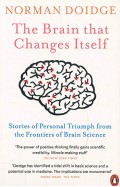- Home
- Books
- Categories
- Non Fiction
- Self Help
- Models of the Mind: How Physics, Engineering and Mathematics Have Shaped Our Understanding of the Brain
Models of the Mind: How Physics, Engineering and Mathematics Have Shaped Our Understanding of the Brain
By: Grace Lindsay
-
Rs 3,295.00
Due to constant currency fluctuation, prices are subject to change with or without notice.
In Models of the Mind, author and computational neuroscientist Grace Lindsay explains how mathematical models have allowed scientists to understand and describe many of the brain's processes. She introduces readers to the most important concepts in modern neuroscience, and highlights the tensions that arise when the abstract world of mathematical modelling collides with the messy details of biology.
Each chapter of Models of the Mind focuses on mathematical tools that have been applied in a particular area of neuroscience, progressing from the simplest building block of the brain - the individual neuron - through to circuits of interacting neurons, whole brain areas and even the behaviours that brains command. Grace examines the history of the field, starting with experiments done on frog legs in the late eighteenth century and building to the large models of artificial neural networks that form the basis of modern artificial intelligence. Throughout, she reveals the value of using the elegant language of mathematics to describe the machinery of neuroscience.
In Models of the Mind, author and computational neuroscientist Grace Lindsay explains how mathematical models have allowed scientists to understand and describe many of the brain's processes. She introduces readers to the most important concepts in modern neuroscience, and highlights the tensions that arise when the abstract world of mathematical modelling collides with the messy details of biology.
Each chapter of Models of the Mind focuses on mathematical tools that have been applied in a particular area of neuroscience, progressing from the simplest building block of the brain - the individual neuron - through to circuits of interacting neurons, whole brain areas and even the behaviours that brains command. Grace examines the history of the field, starting with experiments done on frog legs in the late eighteenth century and building to the large models of artificial neural networks that form the basis of modern artificial intelligence. Throughout, she reveals the value of using the elegant language of mathematics to describe the machinery of neuroscience.
Models of the Mind: How Physics, Engineering and Mathematics Have Shaped Our Understanding of the Brain
By: Grace Lindsay
Rs 3,295.00 Ex Tax :Rs 3,295.00
Zubin Mehta: A Musical Journey (An Authorized Biography)
By: VOID - Bakhtiar K. Dadabhoy
Rs 840.00 Rs 1,050.00 Ex Tax :Rs 840.00
Al-Ghazali On Intention Sincerity And Truthfulness
By: Abu Hamid Al-Ghazali
Rs 799.00 Ex Tax :Rs 799.00
Freedom to Think: Protecting a Fundamental Human Right in the Digital Age
By: Susie Alegre
Rs 2,795.00 Ex Tax :Rs 2,795.00
The Curse of Cash – How Large–Denomination Bills Aid Crime and Tax Evasion
By: Kenneth S. Rogoff
Rs 1,975.50 Rs 2,195.00 Ex Tax :Rs 1,975.50
How the Brain Works: The Facts Visually Explained (How It Works) Hardcover
By: DK
Rs 4,795.00 Ex Tax :Rs 4,795.00
Supercharge Your Brain: How to Maintain a Healthy Brain Throughout Your Life
By: James Goodwin
Rs 2,795.00 Ex Tax :Rs 2,795.00
Myths Illusions and Peace: Finding a New Direction for America in the Middle East
By: Dennis Ross
Rs 1,095.00 Ex Tax :Rs 1,095.00
The Origins of Political Order From Prehuman Times to the French RevolutioN
By: Francis Fukuyama
Rs 3,895.00 Ex Tax :Rs 3,895.00
Manning Up: How the Rise of Women Has Turned Men into Boys
By: Kay Hymowitz
Rs 995.00 Ex Tax :Rs 995.00
The Obama Syndrome: Surrender At Home War Abroad
By: Tariq Ali
Rs 1,036.00 Rs 1,295.00 Ex Tax :Rs 1,036.00
The Quest For Meaning: Developing A Philosophy Of Pluralism
By: Tariq Ramadan
Rs 1,116.00 Rs 1,395.00 Ex Tax :Rs 1,116.00
Al-Ghazali On Intention Sincerity And Truthfulness
By: Abu Hamid Al-Ghazali
Rs 799.00 Ex Tax :Rs 799.00
Freedom to Think: Protecting a Fundamental Human Right in the Digital Age
By: Susie Alegre
Rs 2,795.00 Ex Tax :Rs 2,795.00
The Curse of Cash – How Large–Denomination Bills Aid Crime and Tax Evasion
By: Kenneth S. Rogoff
Rs 1,975.50 Rs 2,195.00 Ex Tax :Rs 1,975.50
How the Brain Works: The Facts Visually Explained (How It Works) Hardcover
By: DK
Rs 4,795.00 Ex Tax :Rs 4,795.00
Supercharge Your Brain: How to Maintain a Healthy Brain Throughout Your Life
By: James Goodwin
Rs 2,795.00 Ex Tax :Rs 2,795.00
No recently viewed books available at the moment.
Zubin Mehta: A Musical Journey (An Authorized Biography)
By: VOID - Bakhtiar K. Dadabhoy
Rs 840.00 Rs 1,050.00 Ex Tax :Rs 840.00
Models of the Mind: How Physics, Engineering and Mathematics Have Shaped Our Understanding of the Brain
By: Grace Lindsay
Rs 3,295.00 Ex Tax :Rs 3,295.00
Al-Ghazali On Intention Sincerity And Truthfulness
By: Abu Hamid Al-Ghazali
Rs 799.00 Ex Tax :Rs 799.00
Freedom to Think: Protecting a Fundamental Human Right in the Digital Age
By: Susie Alegre
Rs 2,795.00 Ex Tax :Rs 2,795.00
The Curse of Cash – How Large–Denomination Bills Aid Crime and Tax Evasion
By: Kenneth S. Rogoff
Rs 1,975.50 Rs 2,195.00 Ex Tax :Rs 1,975.50
How the Brain Works: The Facts Visually Explained (How It Works) Hardcover
By: DK
Rs 4,795.00 Ex Tax :Rs 4,795.00
Supercharge Your Brain: How to Maintain a Healthy Brain Throughout Your Life
By: James Goodwin
Rs 2,795.00 Ex Tax :Rs 2,795.00














-120x187.jpg?q6)








-Hardcover-120x187.jpg?q6)




-120x187.jpg?q6)





